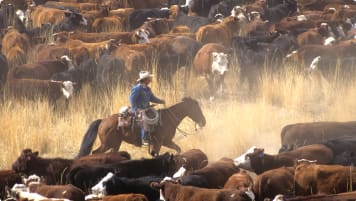Menzies, Western Australia
Menzies, North of Kalgoorlie, close to Lake Ballard, Gwalia and other icons of historic Western Australia. Part of the historic tour of Western Australia.
3 Dec 21 · 9 mins read
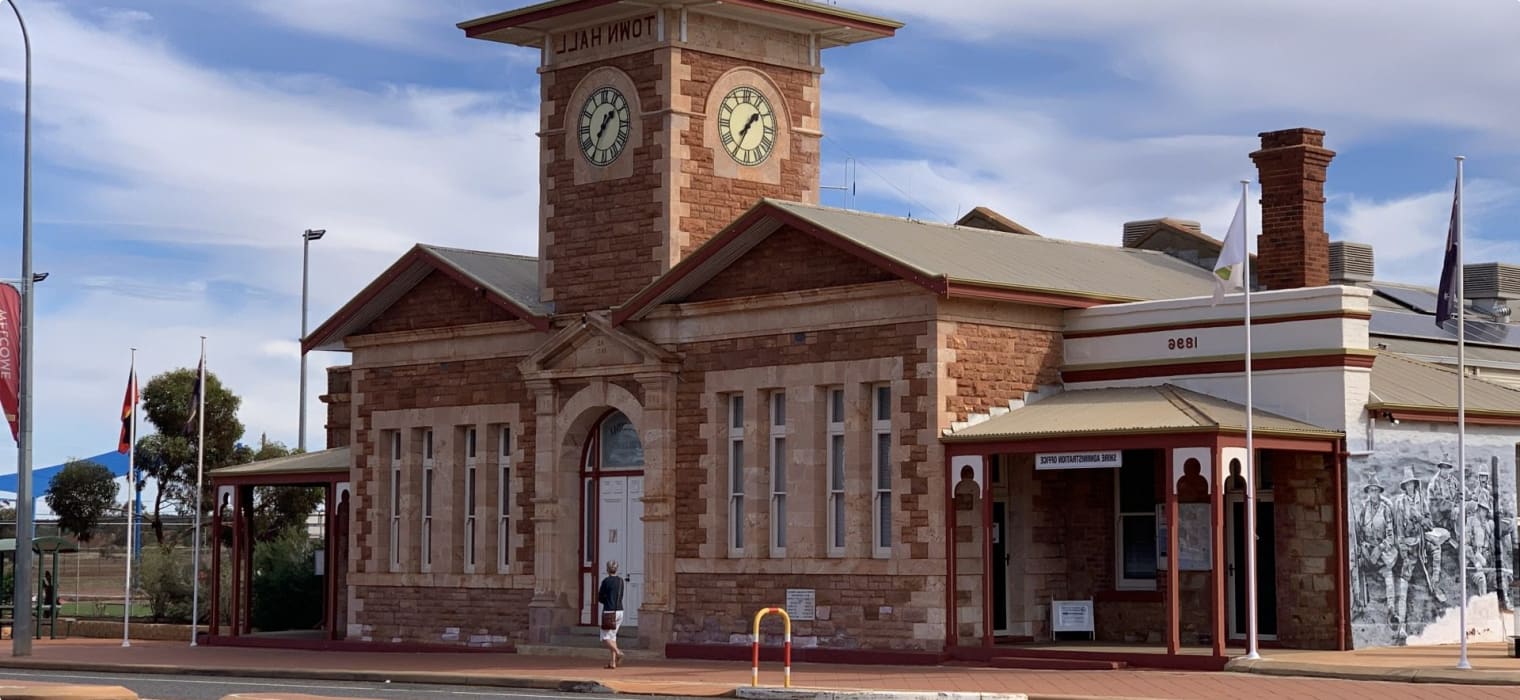
Menzies
By Marco Stojanovik
The historic mining town of Menzies thrived during its heyday at the turn of the previous century, riding the wave of the Western Australian gold rush. With several successful mines in its vicinity, and as the final stop on the rail link to Kalgoorlie, it acted as the unofficial capital of the North Coolgardie Goldfields, home to an estimated 10,000 residents. But as the gold run out, so did the town’s fortunes, with much of the population leaving and the buildings relocated.
Still surviving, albeit a much smaller remnant of its glory days, the town today provides an insight into that golden era. Located 728km east-north-east of Perth and 132km north of Kalgoorlie, and with several attractions within the townsite and nearby, Menzies is a must visit on tours to Western Australia. This article explores the town’s history and attractions to assist your Odyssey Traveller small group tour.
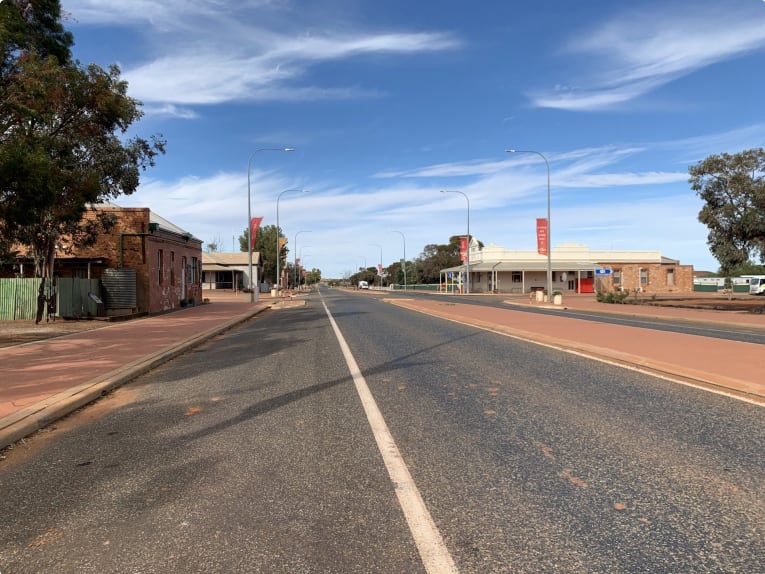
The Menzies Gold Rush
Menzies was discovered and boomed during the Western Australia gold rush days of the 1890s. After initial finds at the rich Coolgardie field in 1892, prospectors were tempted to venture further afield, the track at first extending out to Ninety Mile (Goongarrie). Then from Ninety Mile the probing parties pushed out again to a point twenty miles on. Here, in 1894, J. J. Brown, C. Kirkby, and C. Jackman sunk a shaft six feet deep showing a reef carrying good visible gold.
L. R. Menzie and J. E. McDonald, in company with Jimmy an Aboriginal tracker and Cumbra an Afghan camel driver, were prospecting for a Perth syndicate headed by Sir George Shenton when they heard about the shaft. Menzie met Brown at Ninety Mile and agree to inspect his shaft with a view to purchase if it proved suitable. However, on his way he kept too far to the west and missed Brown’s camp.
It was at this point that he stumbled upon a rich alluvial deposit, finding many rich nuggets and quartz specimens studded with gold. Packing as much as possible into their saddle bags, Menzie and Macdonald hurried back to Coolgardie, the nearest centre with a Registrar’s office, leaving Jimmy and Cumbra to guard the find.
The claim was registered on the 1st of October 1894 as Lease No. 1380 in the name of Menzie and Sir George Shenton, and lease No. 1381 for Menzie and R.F. Sholl. These were named the Lady Shenton and Florence mines and the location Menzies.
Rumours of the rich find immediately spread and several parties set out from Ninety Mile to find the location, leading to several other discoveries made in quick succession. Soon a string of mines had developed, including the Alpha, Nada, Friday, Wedderburn, Crusoe, and Lady Sherry. Between them, the mines yielded 400,000 ounces of gold to 1905, enough to ensure the growth a fine and active town.
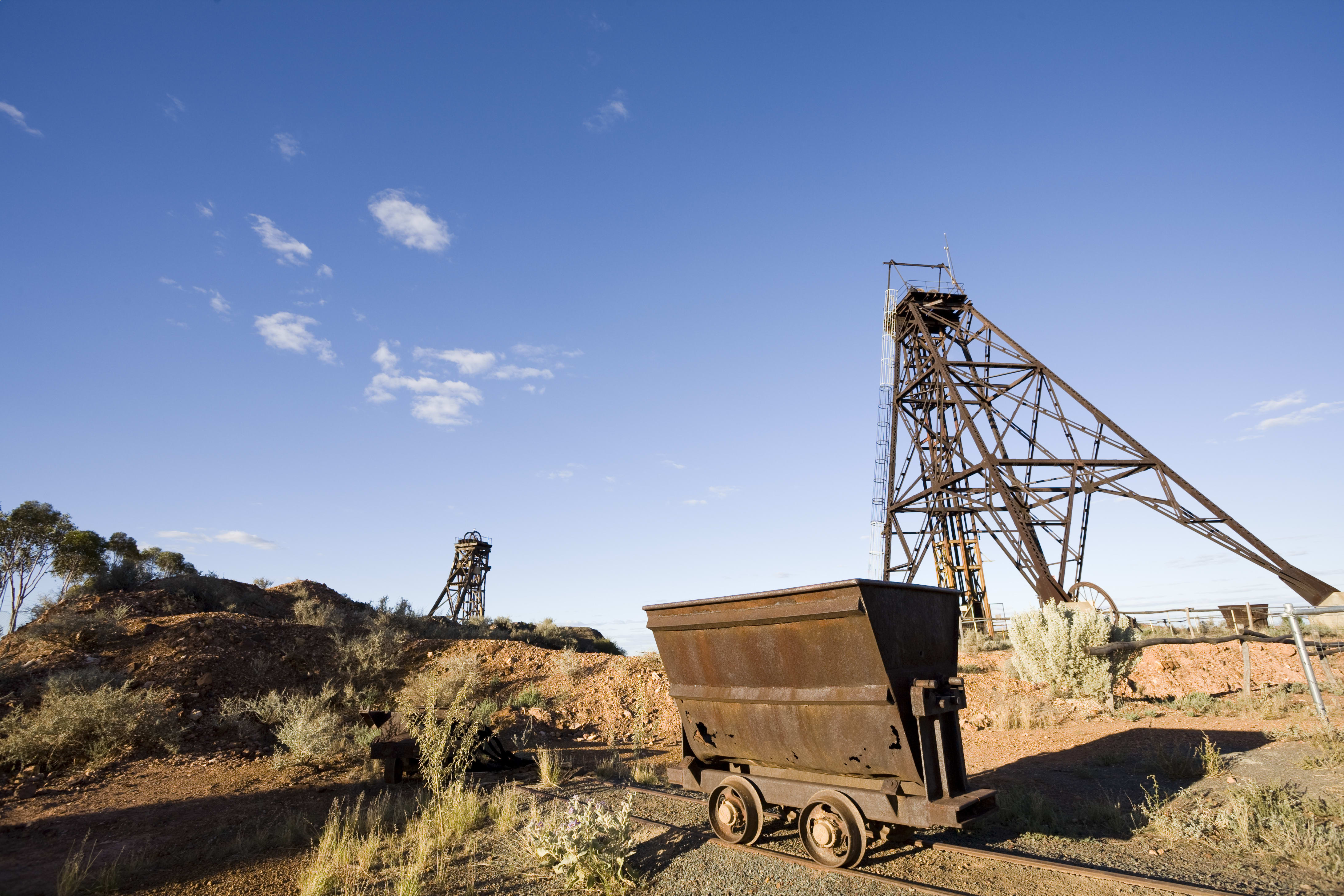
Rise and Decline of the Menzies Townsite
Within a few months of the initial rich gold finds, the Mining Warden for the area recommended a townsite be declared. Gazetted in August 1895, it was named in Menzies’ honour, and stores, hotels, public buildings, and houses quickly sprung up. The prevailing architecture consisted for the most part of a timber frame covered with hessian and roofed with galvanised iron, interspersed with canvas and calico tents and bush huts.
Menzies’ rapid growth ensured that by December 1895 it had been declared a municipality, with an election for Councillors held the following month. Harry Gregory, owner of the Menzies Hotel, became chairman. In 1900, substantial municipal chambers of brick and stone were built at a cost of £3000. These consisted of a suite of offices, council chambers, public reading room and a circulating library, with a large hall at the rear.
By this point, Menzies cinssited mostly of one street – Shenton Street – in which there were six hotels, including the Menzies, Post Office, Railway, St. Albans, White House and Maori. As the street was then not yet covered in road materials, it would be knee deep in dry weather and a similar depth of mud in the wet. Later it was pitched with slate slabs on its edges and covered with 1.5 inch metal.
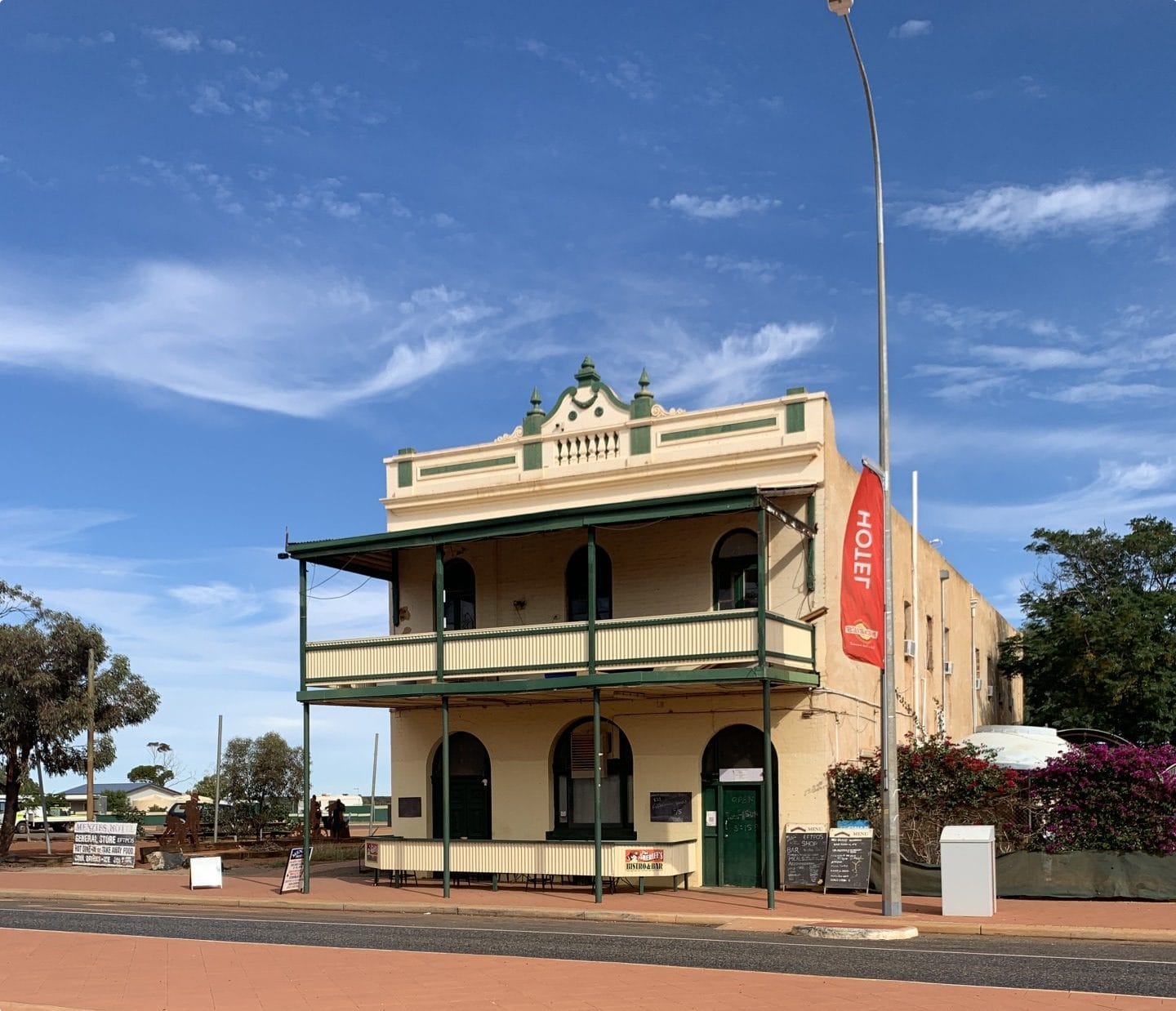
Just as was the case in the other towns of in the North Coolgardie Goldfields, the residents in the early years of Menzies had to endure heat, flies, lack of water, poor diets, and limited transportation. Sickness was also frequent, with typhoid fever especially ravaging the town and claiming many lives. Fires, meanwhile, also took a heavy toll, destroying several of the early buildings, which had been constructed simply of wood, hessian, and corrugated iron.
Nevertheless, the people persevered to make Menzies an attractive and profitable town. Water shortages were solved by carting in supplies from surrounding lakes and underground sources, which were then replaced by a government-built dam from 1901. In order to help control the spread of fires, a local fire brigade was formed in 1898 and the Council made it compulsory for at least one wall of business premises to be made of brick. The spread of disease, meanwhile, was controlled by improved sanitary conditions and a new 50-bed hospital which opened in 1896.
The people’s main forms of recreation during this time were picnics and camel races, for which a racecourse was built. For picnics, people would borrow camels and ride a few miles out of town to some picturesque spot, or one of the dry lakes. Shouting the word “ushtah” would stop a camel. At the races, when the leading camel was not the favoured, spectators would chorus this sound. This would result in the leading camel immediately kneeling down and stopping, enabling a more well backed animal to win. Push bicycles were also popular, used along the narrow tracks through the bush made by camel trains.
There was also a clay tennis court in the town, as well as a wooden cricket pitch covered with cocoa nut matting. Various matches were arranged from time time, as well as an annual fixture of the Warden’s Court officials versus the banks. Horse racing also took place once a year, with Perth horses commencing a round of meetings at Coolgardie, followed by Kalgoorlie, Boulder, Broad Arrow, Menzies, and other towns.
During 1895 and 1896, the Menzies hierarchy lobbied energetically for the railway link from Kalgoorlie to be extended to the town. They were soon rewarded for their efforts, with the route announced on 6th September 1897 from Kalgoorlie, to Paddington, Broad Arrow, Bardoc, Canegrass, Goongarrie, Comet Value, Woolgar and Menzies. Over 10 weeks, half a million yards of earthworks were formed and 50 miles of track laid with 60-lb rails.
Excitement mounted in Menzies as the route officially opened in March 1989, with the town holding a gran opening banquet to celebrate. City guests and visitors arrived in Menzies on the train at 1.00pm. While an hour later, the official train arrived carrying the Governor of W.A. Sir Gerard Smith, the Premier Sir John Forrest, and official government party. The town became a bright and dazzling scene, with top hats and parasols mixed with Afghan camel men, schoolchildren in white, Druids in regalia, and helmeted firemen. A procession then rode up Shenton Street to the Town Hall, comprising the band, pioneers and others in drays and carts, three Cobb and Co. coaches, the fire brigade with horse drawn pump, a great number of cyclists, 16 Afghans on their camels, and in the centre the Governor in a special two-horse trap.

Menzies’ forwarding trade flourished as a result of the coming of the railway. The whole of the stores consumed by the people of the north eastern goldfields, the mining machinery and timber for mine use, and other commodities required in the various districts, were brought to Menzies by rail to then be distributed by horse and camel teams. The average weekly road leaving Menzies was 300 tons, which required 230 horses and 70 camels and gave employment to 120 men in addition to 20 men employed for handling goods at the station yards.
In 1900, with the town thriving, the area’s population peaked at an estimated 10,000, half of whom resided in the town and the other half in the surrounding land. At this time, the town had thirteen hotels, two breweries, a town hall, hospital, school, and many shops.
However, typical of many goldmining towns, once the limit of available resources was reached, people drifted away and Menzies declined. Its downfall began from about 1903 and by 1906 five of the major mining companies had ceased production. Most of the others had followed suit by 1910, with most miners leaving town to try their luck elsewhere. Within a decade the town’s peak population, it had shrunk back to just a few hundred.
Unlike the majority of the other gold rush boom towns, Menzies did not completely fade away. After the big gold mines closed, it was sustained by the growing pastoral industry and by independent prospectors. Most of its buildings were ultimately dismantled and relocated elsewhere, however. Today only a few significant buildings are left on Shenton Street, including the townhall, a hotel, a shire office, a nursing post, and a police station. Some gold mining also still continues in and around Menzies to the present day, with the odd gold prospector and fossicker there to seek their fortune.
Attractions
The Town Hall, erected in 1896 and extended in 1901, still stands as a reminder of Menzies’ glory days. A symbol of the prosperity of the town at the time, it is a very handsome building which has been described stylistically as “rural Italian’. It is famous for standing ‘clockless’ for 100 years due to the loss of the original clock in the wreck of the RMS Orizaba off the coast of Rottnest Island in 1905. Nothing is known of the fate of the clock – whether it went to the bottom of the sea or was salvaged and sold. However, it never reached Menzies. With the town experiencing declining fortunes, the municipal leaders decided not to order a replacement. So, it remained bare until New Year’s Eve 200, when a clock was finally installed to mark the new millennium.
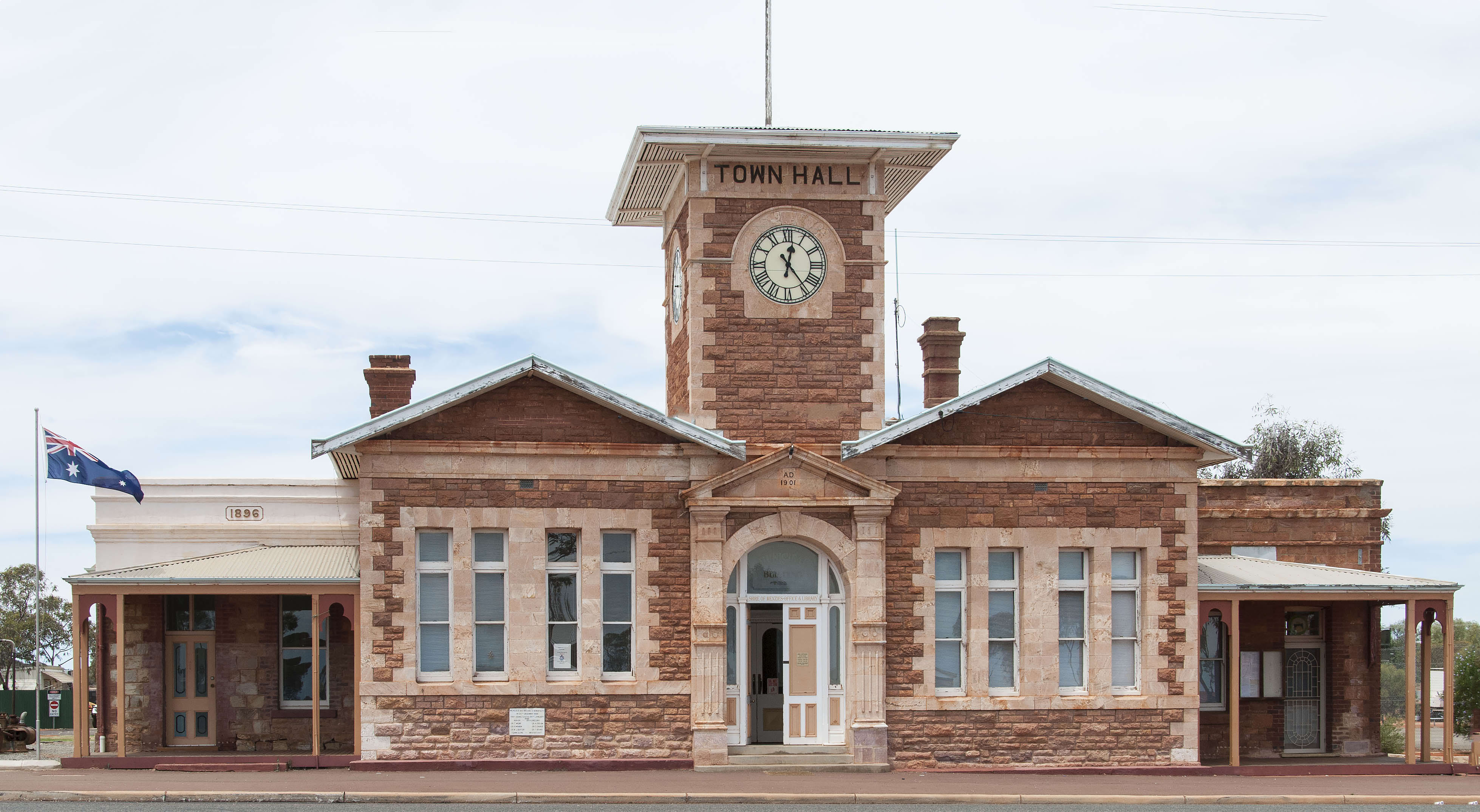
The Lady Shenton Hotel, named after the hugely lucrative Lady Shenton Mine, opened in 1896. It was one of the 13 hotels along Shenton Street during Menzies heyday and was hugely successful before going the way of the fate of the town and closing in 1910.

Since 2007, it has been beautifully restored and reopened the Visitor Information Centre, Public Library, Community Resource Centre, and Post Office Agency.

Dotted over 10 square kilometres on the stark white Lake Ballard saltpan to the north of the town is the world’s largest outdoor gallery. Known as ‘Inside Australia’, the exhibition was created in 2003 by internationally renowned artist Antony Gormley. It consists of 51 sculptures – unique metal figures representing some of the local residents of Menzies – which can be viewed either from the lake surrounds or by walking around the lake when it’s dry.

To the south of Menzies are several ghost mining towns, including Siberia, Davyhurtst, Mulwarrie, Milline, Riverina, Comet Vale, Mt Ida, Goongarrie, and Kookynie. Abandoned once the gold that supported them petered out, today the towns’ remnants provide an insight into the rich and colourful past of Western Australia’s gold rush era.
Another notable nearby attraction is the Niagara Dam, built by C. Y. O’Connor in 1898 to provide freshwater for the steam locomotives on the railway extending north from Kalgoorlie. The wall was built across ideal breakaway country to dam water fed from a 720-acre watershed. When completed it could hold over 140 million litres of water. Today it is a popular picnic spot for a refreshing swim or camp under the stars.
Tour of Western Australia
Odyssey offers easy, convenient, and relaxed escorted small group tours across the great state of Western Australia. We explore the state’s unspoiled native wilderness, sites of its ancient Aboriginal history, World Heritage Sites, and breath-taking wildflower blooms, all with some truly spectacular scenery along the way. This and more is all waiting to be explored on one of Odyssey’s small group tours of Western Australia, designed for the senior traveller, and led by experienced, and enthusiastic like-minded people.
Crafted tours for mature world travellers include our:
- Western Australia Tour
- Small Group Tour of Australia’s Kimberley
- Wilf Flowers Tour of Western Australia
- Outback Tour of the Northern Territory and Western Australia
Articles about Australia published by Odyssey Traveller:
- The Kimberley: A Definitive Guide
- Uncovering the Ancient History of Aboriginal Australia
- Aboriginal Land Use in the Mallee
- Understanding Aboriginal Aquaculture
- Mallee and Mulga: Two Iconic and Typically Inland Australian Plant Communities (By Dr. Sandy Scott).
- The Australian Outback: A Definitive Guide
For all the articles Odyssey Traveller has published for mature aged and senior travellers, click through on this link.
External articles to assist you on your visit to Western Australia:
- The Ultimate Guide to Western Australia’s Wildflowers
- Why Western Australia’s Wildflowers are so Unique
- Popular National Parks Western Australia
- Five of the Best Beaches in Esperance
- Western Australia’s Best Beaches
Originally published July 5, 2021. Updated on December 3, 2021.
Related Tours
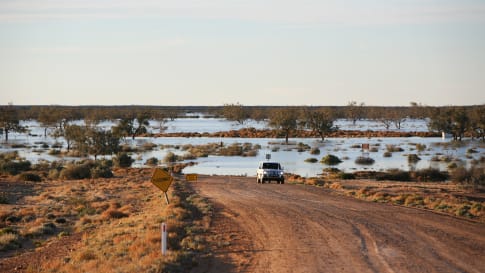
65 days
MarLong tour of Australia for a small group
Visiting New South Wales, Northern Territory
Small group tour for senior couples and solo travellers touring Australia. Travelling through the outback and visiting many of the famous sights as well as off the beaten track locations. Learn about the history of the people who explored the deserts, from indigenous communities to Europeans, as well as Burke and Wills, visit White Cliffs, Marree and far north Kakadu and the Kimberley.
From A$48,995 AUD
View Tour
13 days
May, Jun, Jul, Aug, SepSmall group tour of Australia's Kimberley
Visiting Western Australia
Escorted small group tour of the Kimberley. We explore and visit The Bungles, Bell Gorge, Mitchell plateau & Halls Creek in the dry season. Amazing landscapes intertwined with Aboriginal communities resident more than 45,000 years.
From A$15,390 AUD
View Tour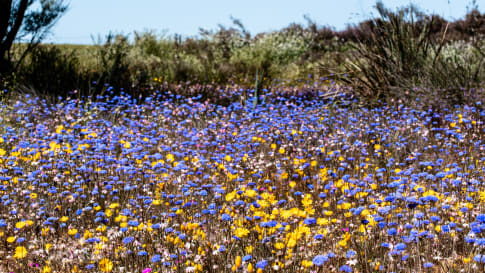
15 days
Aug, SepWildflowers tour of Western Australia
Visiting Western Australia
Escorted small group tour for senior and mature travellers as a couple of solo traveller. Upto 12 people of WA's Wildflower regions including Esperance and the Fitzgerald river National park. Local guides and program leader share knowledge about this fascinating region whilst in bloom.
From A$12,250 AUD
View Tour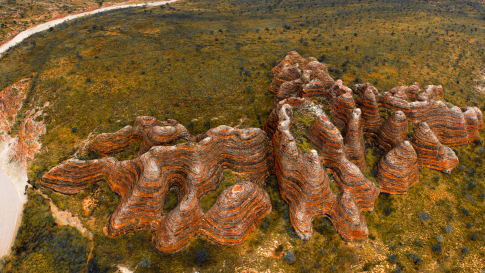
19 days
Sep, Apr, May, Jun, Jul +2Kimberley, Purnululu, Tiwi Islands and Arnhem Land
Visiting Northern Territory, Western Australia
Small group tour touring most of the Australian territory, travelling through the outback and visiting many of the famous sights as well as off the beaten track locations, giving you the opportunity the explore and meet our people in the most remote locations and far north Kakadu and the Kimberley.
From A$14,995 AUD
View Tour
22 days
Feb, Mar, Apr, Jun, Aug +1Western Australia tour
Visiting Western Australia
Escorted small group tour for senior and mature travellers as a couple of solo traveller. Upto 12 people of WA's regional History tour. The program including Esperance, Kalgoorlie, Gwalia and Perth. Local guides and program leader share knowledge about this fascinating region.
From A$13,695 AUD
View TourRelated Articles

Derby, Western Australia
Article about Derby, Western Australia. Important settlement for mature and senior travellers to explore on a small group tour for couples and solo travellers in outback Australia.

George Grey's Kimberley Expedition
Article on Western Australia about the Colonial explorer George Grey. Supports small group tours for mature couples and solo travellers of the Kimberley and places of interest such as Wyndham and its pastoral history. The Kimberley is where the first Australian arrived.
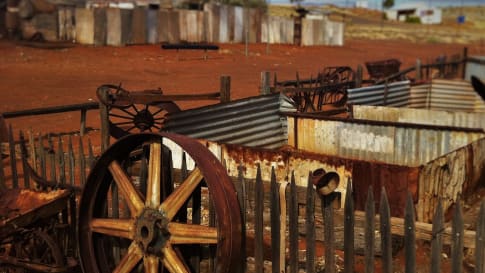
Ghost Towns of Western Australia's Eastern Goldfields
Ghost Towns of Western Australia. Eastern Goldfields Following the discovery of gold in the 1890s, thousands of prospectors flocked to Western Australia’s Eastern Goldfields region. From initial finds in 1892 at Coolgardie.

Halls Creek, Western Australia
Halls Creek an important stop on our Small group tour of the Kimberley. We learn about the gold rush on this tour for mature and senior travellers, couples and singles.
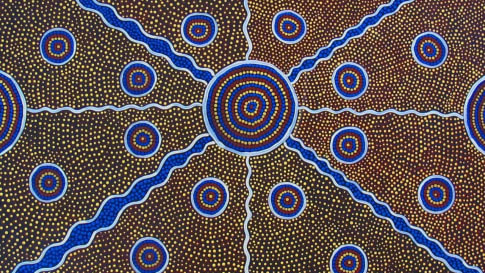
Historical Aboriginal Marketplaces
Article about Aboriginal history and trading routes and marketplaces in outback Australia. Supporting small group tours for senior and mature couples and solo travellers.

The Arrival of Aboriginal Australians on the Continent
Tracing Aboriginal history via an outback small group tour for mature and senior couples or solo travellers provides an intriguing learning platform about Australia, rock art, trading and culture that traces a history possibly some 120,000 years ago.

The Australian Outback: A Definitive Guide
Explore learn and consider what is the outback in this article. For mature and senior travelers considering joining a small group package tours into the outback to see, learn and explore about this unique place, not only the landscape but the Aboriginal approach to living. On each of the tours for couples and the single traveler you learn something different but fascinating, from Outback Queensland, the Flinders, Broken Hill and the Kimberley and the wildflowers all contribute to this question, what is the outback?

The Avon Valley, Western Australia
Article about the colonial settlement of the Avon Valley, Western Australia for mature and senior travellers interested in history when joining a small group tour as a couple or solo traveller.

Why did the British settle Australia?
Escorted small group tours for mature and senior travellers that promote aboriginal and colonial history discussion on tour. For couples and solo travellers interested in learning about Aboriginal history and the colonial explorers across the states.

Wyndham, Western Australia
Article on the historic Kimberley town of Wyndham. Learn about how this was the entry to this part of the Kimberley to Halls creek, and for the pastoralists in the Victorian era. Supports small group tours for mature and senior travellers couples and solo travellers.


